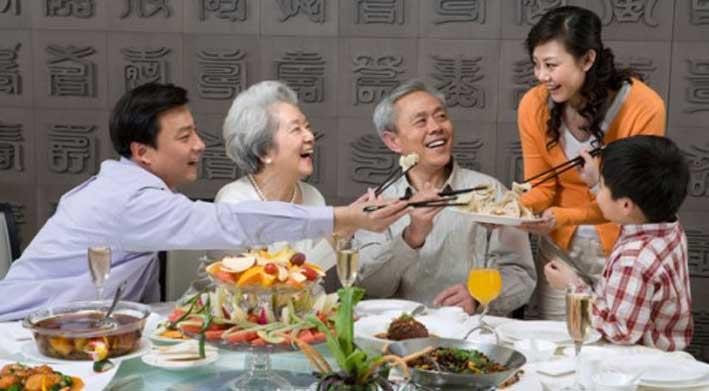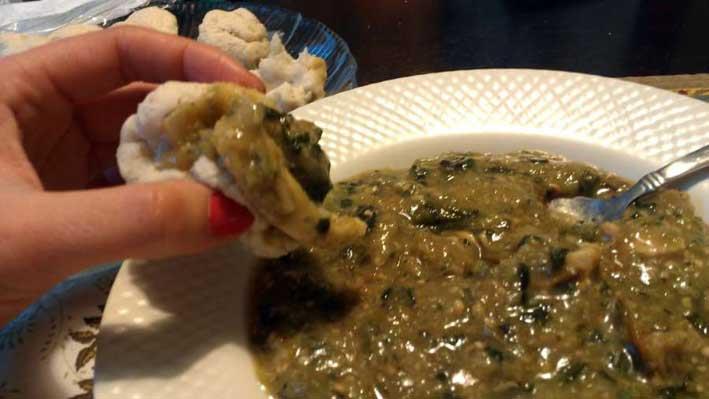Dining rituals have evolved radically over the centuries, yet they have always existed. Going back thousands of years to the early Homo sapiens, eating etiquette involved chewing voraciously on meaty bones (often human) and drinking water out of a human skull. By the Middle Ages, these rituals had progressed to a slightly more civilised level in Europe. Well, at least the meat consumed was now of animal origin. However, manners amongst mankind only extended to wiping the grease off their faces after tearing into a tasty piece of suckling pig. It was not until the Renaissance period that refined table manners came into existence, given the beauty and fragility of dinnerware and wine glasses presented at decadent Venetian balls.
In 1740, French artist Jean-Baptiste-Siméon Chardin painted a scene of a maid teaching two young children how to eat correctly. Cutlery and sitting up straight in your chair were 18th-century inventions. British tea rituals dating back from the 1700s consisted of formalised rituals for pouring tea and holding the delicate porcelain cup in the correct fashion. The 150th anniversary of Mrs Beeton's book Household Management truly encapsulates the weird and wonderful world of English manners. For example, at a dinner party, "the lady begins to help serve the soup, commencing with the gentleman on her right and on her left, and continuing in the same order till all are served. It is generally established as a rule, not to ask for soup or fish twice, as in so doing, part of the company may be kept waiting for the second course." In certain highbrow circles, these complex rules still exist, but in even the most elite of establishments, this rigid order is rarely practiced nowadays.
Human beings do have the incessant habit of enforcing unnecessarily complicated rules. In the grand scheme of things, how essential are table manners? My mother was definitely right about some things. You shouldn't talk with your mouth full. I guiltily confess that I do sometimes put my elbows on the table if I'm dining with a friend over a meal with wine and good conversation. And if I'm dining alone, I would almost certainly lick my plate clean.

In my world, there are only three things that I deem totally unacceptable at the dinner table:
- Tucking into your meal before your host/hostess has sat down
- Noisy, slurpy eaters
- Any dinner conversation that involves football, illness, bodily functions or your boring job.
In today's world, it might seem as though we have returned to the barbaric ways of the mediaeval feast, with the invention of barbecued ribs, sandwiches, nachos and cheesy crust pizza, often eaten in front of the TV. Eating is, after all, an essential means of survival. A meal, however, is an important and symbolic social ritual. Virtually every culture in the world has rituals around food - from the fasting and feasting in Jewish, Christian and Muslim traditions to the highly ritualised tea ceremony in Japan.
The rituals of family dinners are an iconic part of growing up. Some of my fondest childhood memories are sitting around our old pine dining table as a family unit. My father would tell the same stories every week and my sister and I would roll our eyes as we devoured my mother's speciality dish: oven baked pork with crackling and roast potatoes.
One of Mrs Beeton's most famous quotes states that all creatures eat, but "man only dines", which is why these rituals are so essential to our lives. We still see a table-cloth and neatly placed cutlery as integral to a proper meal. And it is these rituals that define the meal and, ultimately, define who we are. This is why table manners shape our lives as firmly as they did for those children in the painting by Chardin.
World eating rules
Table etiquette in 10 countries across the globe
We teach our children not to talk with their mouths full, to use cutlery in the correct fashion and to finish everything on their plate. However, in some countries, burping and slurping may be perfectly acceptable and clearing your plate considered an insult. It may be wise, therefore, if you are visiting another culture to learn their dining customs beforehand, as you may end up insulting them without even realising it.
Ethiopia
The Ethiopian people have a wonderful tradition called ‘gursha’ where they hand-feed each other as a gesture of trust and hospitality between those sharing the food.
Italy
Never order a milky beverage after a meal as Italians believe that milk hinders digestion. Instead, opt for straight espresso or coffee. No one’s going to look at you disdainfully for ordering a cappuccino, but you might be branded a silly tourist.
Thailand
Don’t put a fork in your mouth. You’re supposed to use your fork to shovel food onto your spoon and then eat it off that.
France
If you are fine dining in swish French style, never cut your lettuce. You must instead fold it with your knife and fork into little, mouth-sized bundles. Once safely back in your kitchen, you can eat your salad any way you damn well please.

China
Finishing everything on your plate is considered rude. Leaving a small amount symbolises that you have had sufficient and acknowledges your host’s generosity. Also, whatever you do, never, ever flip a fish after eating one side. It is considered bad luck as it is, obviously, associated with the capsizing of a fishing boat. Instead, remove the bones completely if you want to get to the other side, or just stare at that delicious fish taunting you from your plate.
Japan
Never stick your chopsticks into the rice bowl. In Japanese culture, this behaviour is only acceptable at funerals, which is just going to make dinner awkward. Burping, on the other hand, is perfectly acceptable. In fact, go mad. Burping noisily shows appreciation for the meal.

Nigeria
When visiting friends in Nigeria’s Kagoro tribe, don’t even think of asking for a spoon if you’re a woman. Women aren’t allowed spoons. Everyone knows spoons lead to anarchy.
Korea
Take cues from your elders. Wait until the eldest person has begun to eat before you dive into your plate and, painstaking though it may be, keep pace with them. This isn’t a race: there’s plenty of kimchi to go round.
The Middle East
It might feel awkward, but eat with your right hand only. The left hand is used for hygiene and – well – ‘bodily functions’ and the right hand is used to eat and socialise with. If you are left-handed, you’ll just have to starve to death.
Britain
At teatime, do all the right things with your teaspoon or risk disgrace and dishonour.
1. When stirring, never touch the sides of your cup with the spoon.
2. Don’t leave your spoon in the teacup.
3. Place your spoon on your saucer, facing the same direction as the cup handle.
4. Sip tea in complete terror and try your best to avoid any faux pas.
Also, be classy when it comes to soup. Tilt the bowl away from you, and scoop away from you with your bowl-shaped soup-spoon, as if to say, “I hate this soup, I couldn’t possible eat it,” before giving in and daintily sipping from the side of your spoon.